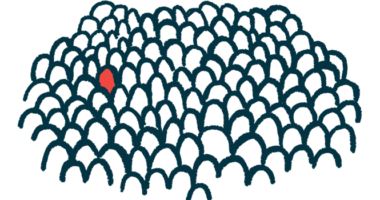Gait Tracking Using RGB-D Camera Could Aid Doctors in Diagnosing, Managing FAP, Study Shows

An affordable, portable, and non-invasive human motion tracking system based on an RGB-D camera can be useful for monitoring gait impairments in people with familial amyloid polyneuropathy (FAP), a study shows.
Using such a tracking system can provide a more accurate assessment compared with the subjective measures — such as visual ones — typically used in clinical practice. That more accurate assessment, in turn, aids doctors in reaching a diagnosis earlier, tracking symptom progression better, and deciding sooner on the best treatment strategies.
The study, “Validation of a Single RGB-D Camera for Gait Assessment of Polyneuropathy Patients,” was published in the journal Sensors.
Tracking body movements provides important clues on the progression of certain disorders affecting mobility, such as familial amyloid polyneuropathy, known as FAP, or transthyretin (TTR) amyloid polyneuropathy.
Patients who carry a V30M mutation in the TTR gene — the most common cause of FAP — are usually affected by neuropathy, which is damage to the nerve fibers.
In people with FAP, neuropathy normally starts by affecting the sensory nerves and the autonomic nerves. Sensory nerves relay information from the senses to the brain and spinal cord, while autonomic ones control the internal organs without conscious recognition, regulating functions like blood pressure and digestion.
Later on, motor nerve fibers — which transmit the brain and spinal cord’s instructions to the muscles for movement — also become damaged. As a result, people with FAP experience lower limb weakness and difficulty walking, which can get worse over time, progressively constraining their mobility.
Although available treatments are not curative and intended to delay or attenuate the nerve damage, an early diagnosis improves the chances of successful treatment. FDA-approved therapies for FAP include Onpattro (patisiran) and Tegsedi (inotersen). Both have been shown to prevent the buildup of amyloid deposits, helping slow disease progression.
A quantitative motion analysis tool could assess motor function in an objective way, helping doctors to make decisions regarding diagnosis or treatment. But this type of analysis is rarely used, and a subjective assessment — usually visual observation — is what is commonly done in clinical practice.
In a bid to develop a gait-analysis tool suitable for clinical use with FAP patients, researchers from the University of Porto and Hospital Santo António, in Portugal, evaluated the use of an RGB-D motion capture camera to analyze walking ability in people with the disease.
Due to their low cost, and ability to capture both color and depth data, RGB-D cameras have shown significant promise in human motion tracking. Because they are marker-free, they also represent a better solution for clinical practice than more complex systems that need multiple cameras and marker reference systems.
To learn more, the researchers compared the performance of a single RGB-D camera (Kinect v2) versus a reference system (Qualisys) for assessing the gait of 10 FAP patients while they walked along a path.
While the reference system included 12 infrared cameras and 61 retro-reflective markers attached to each patient’s body, the RGB-D setup comprised a single camera, containing an infrared sensor, placed in front of the participant.
Three-dimensional (3-D) body posture and motion data provided by both systems were used to obtain 15 spatiotemporal — distance, time and velocity — gait phases and eight kinematic gait parameters, which were relative to joint angles, velocity, and acceleration.
Parameters were measured for each gait cycle and included gait speed, step duration and length, and the duration of stance — when both feet are on the ground — and swing, which is when the reference foot is not on the ground.
Using different methods to compare the two motion capture systems, researchers saw that the RGB-D camera provided an excellent correlation with the reference system for most spatiotemporal parameters (11 of 15), and a good agreement for one kinematic parameter — minimum elbow angle.
The total body center of mass (TBCM) sway, a parameter “important for studying the patients’ balance during gait,” also had an excellent-to-moderate performance, the researchers noted.
“The obtained results show that an affordable, portable and non-invasive system based on an RGB-D camera can accurately obtain most of the studied gait parameters,” they said.
“These quantified gait parameters can be used to develop a more objective and fine-grained motor/gait assessment scale,” which could help doctors reach “an earlier and better TTR-FAP diagnosis and/or a more optimized treatment during patient follow-up, leading to the improvement of the patients’ quality of life,” the team said.
Future studies could explore whether RGB-D cameras can be used to distinguish between different disease stages or detect fine changes in gait patterns during disease progression, the researchers said.






